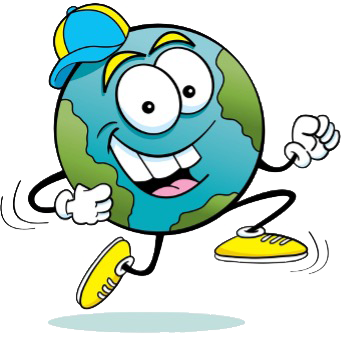This race has it all. Solo ultras, a 100K relay, beer and pizza at the end, … and a long day for the staff, including the Zero Waste team.
The past two years, the rush of people all leaving at once has overwhelmed the Zero Waste team with rapidly filled bags of beer cans and bottles, and towers of discarded pizza boxes. With redesigned waste stations and more signage, could we better handle the rush with only a couple of volunteers?
Sustainability Report: Dances with Dirt – Hell 2018
Date: September 22, 2018
Event company: RF Events, Ann Arbor MI
Location: Halfmoon Lake, Gregory MI
# Attendees: approx. 2,000 runners, family and spectators
Zero Waste Team size: 3
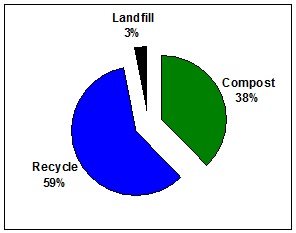 Results
Results
- Compostables: 359 lbs.
- Recyclables: 557.8 lbs.
- Landfill: 30.1 lbs.
Comparison vs. 2017: Overall waste decreased significantly, from over 2,200 pounds to 946. Recycling showed the largest drop, from nearly 1,500 pounds to 558. Cause is not known, but it was not due to runners using the park’s trash dumpster, as its contents were also reduced from last year. Landfill diversion dropped slightly from 97.5 percent, mainly due to a larger decrease in recycling than in trash.
The main contributor to trash was food and containers brought to the race by runners which due to food contamination were not recoverable.
Race Overview
The Hell edition of Dances with Dirt is the final, and most popular, of the DWD series of the year. There are 50K and 50-mile solo distances, but by far the most popular choice is the 100K relay, with teams showing up in all kinds of costumes and choosing “clever” names for their teams.
The relay course legs include swamps, walking in a river, and lots of rocks and roots. Names like “Buttslider,” “Vertigo,” “This Sucks,” and “Styx, River of Death,” provide some clues as to their nature. As a result, runners like to bring their worn-out shoes and throw them away at the end of the day.
Finishers are provided with boxes of pizza and bottles of soda. Teams usually get entire boxes, which leads to a large pile of them going to the waste stations when they leave. There are also a couple of kegs of beer, although many runners and teams also bring their own in cans and bottles.
Zero Waste Plan
While the event begins at 6:00 a.m. with the launch of the solo ultrarunners, the “rush period” takes place from about 5:00 to 7:30 p.m. as the runners finish the after-race parties and exit the park. So we set up our waste stations specifically to handle the rush.
Like last year, we set up stations of double tents between the party area and the parking lot. But we changed the setup from compost/recycling/trash at each tent to one tent dedicated entirely to compost, and one to recycling, with a trash bin in between them. The idea was to reduce cross-contamination and make it easier for runners to dispose of their waste.
Each station also got a bin to collect shoes and clothes, and boxes to collect pizza boxes (which would all be composted).
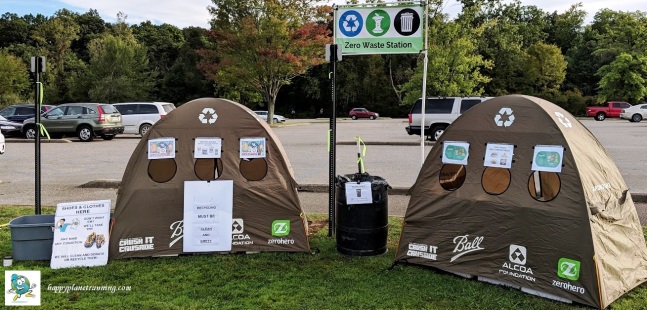
We set up three full stations, one near Ground Zero, one on the far end near the park dumpster (hopefully to divert some people from using it) and one in the center. The relay exchange area got a set of three bins, the pizza tent got recycling and compost bins, and bins were also set up at Ground Zero.

Standard recyclables went into a 20-yard recycling rolloff provided by Waste Management. Bags with waxed paper cups were taken to Western Washtenaw Recycling Authority. The 96-gallon bins with compostable items, and boxes with pizza & pizza boxes, were dropped off at RF Events for pickup by My Green Michigan.

What Went Well
I had two volunteers to help during the rush period – Ana and her son Bryce – who did an outstanding job helping keep things under control. And in the morning I had an unexpected volunteer (thanks, Jim!) to help with setup and early sorting.

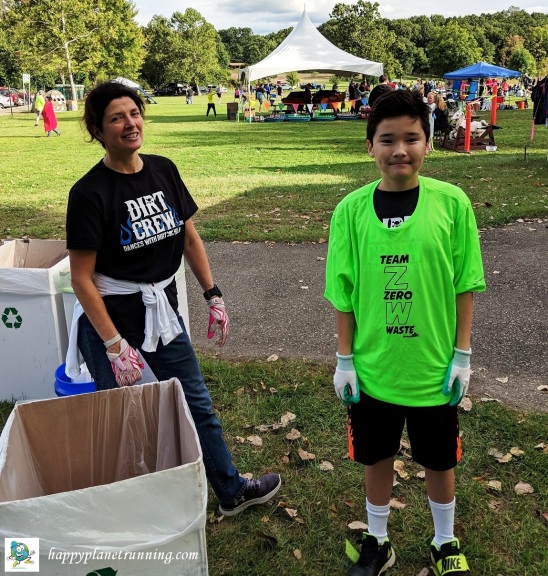
The center station got the most traffic, so we kept it staffed during the worst of the rush. This proved essential to keeping bags sorted, removing contaminants (bottles, cans, etc.) from the pizza boxes, and swapping out full bags when needed.
Most people who chose to discard shoes and clothes did so in the proper bins. We found only a few pairs and items of clothing in the trash bins.
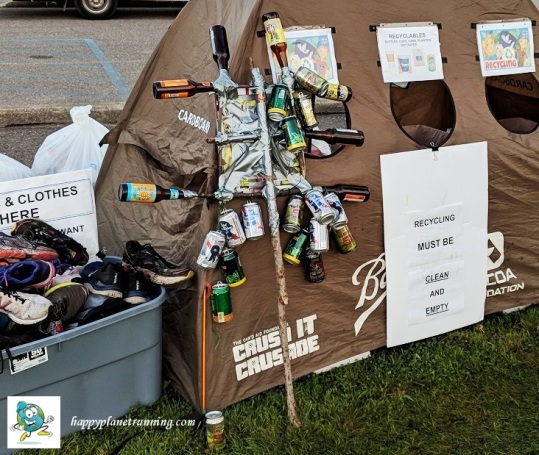
The parking lot was much cleaner post-event than in previous years. There were only a few bottles and miscellaneous food items to pick up.
The station near the park dumpster appears to have successfully captured a lot of waste that in previous years has ended up in the dumpster. The photo on the left is from 2017, on the right from 2018.
We usually get some thank-yous and kudos from event participants, but we received a lot more than usual this time.
Challenges
The total amount of waste generated in a short time, even while down from last year, was too much to completely process by the time it got dark. I came back Sunday morning to finish sorting, clean up the parking lot, and finish packing up.
The aid station waste was of mixed quality. But it was delivered early enough in the day that we were able to sort it without much trouble.
Post-Event Waste Processing
Small plastics, disposable gloves, discarded race bibs, and other difficult-to-recycle items were saved and sorted into TerraCycle Zero Waste boxes after the event. I also washed the clothes and dried out the discarded shoes for donation to The North Face.
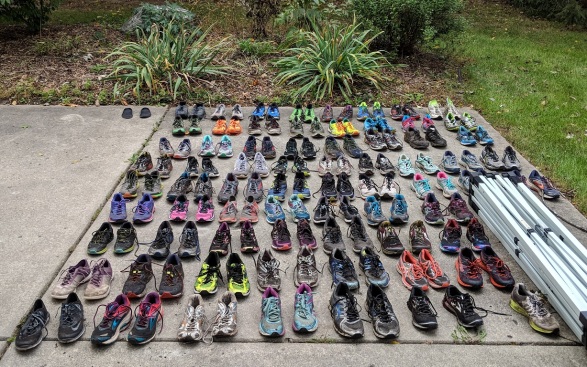
Opportunities for Improvement
As with any event of this size, more volunteers during rush time would be helpful.
We put out more signs this year and tried to simplify the process, but there were still many participants who were unaware of what was compostable and what was recyclable, and tried to dispose of bags of mixed waste. More education would help.
